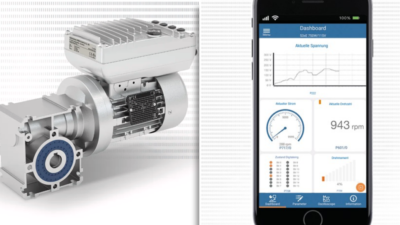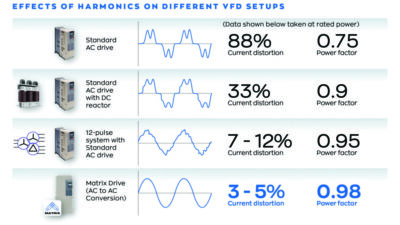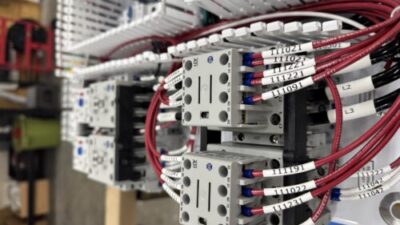With electric motors driving the majority of today’s manufacturing processes, proper motor protection is critical. Not surprisingly, a significant amount of effort and resources have recently been invested in motor protection technology, resulting in cost-effective solutions to many of today’s common motor problems.
Motors fail for a number of reasons–moisture and contamination, short circuits, mechanical problems and old age–but the primary reason is excessive heat, caused by excess current (greater than normal motor full load current), high ambient temperatures, and poor ventilation of the motor. The diagram shows the reduced life of a motor at various levels of overheating. If a motor is continuously overheated by only 10 degrees, its life can be reduced by as much as 50%.
Levels of protection Various levels of protection can be achieved depending on the type of motor protective device applied. In the area of overload protection, traditional electromechanical overload relays are used in a motor circuit to protect motors and circuit conductors from damage caused by continuous overcurrent conditions. These electromechanical relays (eutectic alloy or bimetallic) do not measure current directly, but rather operate by passing current through a heater element, which simulates the actual heating effect that is taking place in the motor.
During overload conditions, the heat generated within the heater element reaches a level that causes a mechanism to operate and an auxiliary contact to open. In typical installations, the contactor coil is wired in series with this contact. When the auxiliary contact opens, the contactor is de-energized, removing current from the motor. New solid-state overload relays, on the other hand, measure current directly, resulting in better accuracy and multiple protective functions. Current can be measured in a variety of ways, but the most typical method is using current transformers. Once an overload condition is reached, the electronic circuit of the motor protective device operates due to the increased level of current, causing a contact to open, de-energizing the contactor and removing current from the motor.
Besides basic overload protection, new solid-state overload relays offer a broad range of protective features that previously required several additional protection devices in the motor circuit. In addition, by measuring parameters such as current, temperature, and phase imbalance, damage to the motor’s stator and rotor can be prevented. this can also provide an early warning of possible trouble with another part of the mechanical system, such as conveyors, belts, gears, and bearings.
Advancements in solid-state technology now incorporate motor control and communica-tions functions. The ability of new solid-stateprotective devices to communicate with device-level networks enables users to manage multiple motors and processes for greater productivity and lower life-cycle costs.
Through network communications, vital motor information can be collected, processed, and displayed, including real-time application parameters. This information can be helpful for diagnosing problems before they occur, allowing operators to monitor the system to prevent a device from tripping at a critical stage in a process. For example, many solid-state devices have prewarning levels for various causes of trip conditions (like ground fault, starting time, underload, or jam) and are also capable of displaying data in the form of LEDs on the devices themselves. In many cases, this communication can take place simultaneously with a programmable controller.
By properly analyzing application requirements and selecting appropriate protective components, motor management can be applied to maximize motor life and the performance of the appli-cation. Protecting motors means protecting your business.



